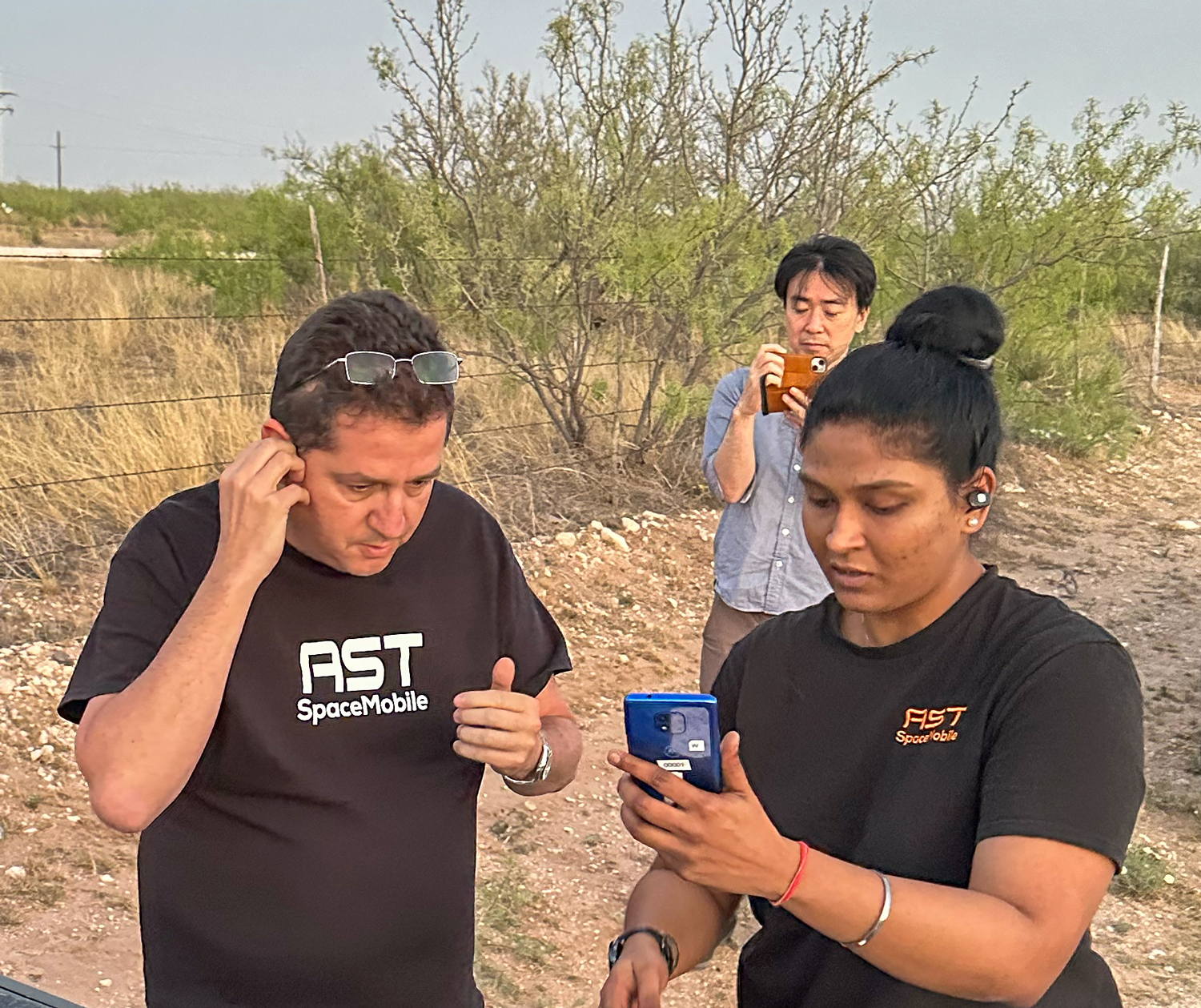TAMPA, Fla. — AST SpaceMobile announced April 25 it made the first voice call last week with a standard smartphone using its BlueWalker 3 test satellite in low Earth orbit (LEO).
An unmodified Samsung Galaxy S22 using mobile spectrum from AT&T directly connected to the satellite April 20 from Midland, Texas, for a brief chat with an iPhone user in Japan using local operator Rakuten’s network.
Test calls have since been made both indoors and outdoors, AT&T head of global roaming Suja John told SpaceNews, and at various lengths up to several minutes.
The companies have not disclosed any details about the performance of these tests, which they said are continuing as part of plans to offer broadband services including voice, text, data, and video for phone users outside terrestrial coverage.
“The successful demonstration of voice capabilities is a step on the path to cellular broadband capabilities,” John said.
“Additional testing and measurements on the smartphone uplink and downlink signal strength have confirmed the ability to support cellular broadband speeds and 4G LTE / 5G waveforms.”
AST SpaceMobile said the Texas-based venture has also conducted initial compatibility tests on other smartphones and devices with the prototype satellite, including exchanging the SIM and network information needed to support direct-to-device services.
Abel Avellan, AST SpaceMobile’s CEO, said the voice tests marked “the most significant milestone to date” for the company following the launch in September of BlueWalker 3 and its colossal 64-square-meter phased array antenna.
In a March 31 financial update, AST SpaceMobile said a SpaceX launch for its first five commercial satellites had slipped into early next year after suffering further manufacturing delays and cost overruns.
The company has a test license from the Federal Communications Commission to use cellular frequencies for connecting to phones in Texas and Hawaii — and then spectrum in Q and V bands to direct the traffic back to gateways on the ground.
However, AST SpaceMobile still needs regulatory permission to provide commercial services from its proposed constellation.
John said AT&T is participating in an ongoing rule-making process at the FCC for a framework proposed March 17 for regulating the use of terrestrial wireless spectrum from space.
AST SpaceMobile, plans to present its satellite test data as part of its FCC application process.
“We plan to offer service commercially through our collaboration with AST SpaceMobile once the service is commercially viable and the parties agree on commercial terms,” John said.
AST SpaceMobile says it has similar agreements with other telcos worldwide that have about two billion subscribers altogether.
Virginia-based Lynk Global is also seeking permission to provide commercial services in an emerging direct-to-device market attracting startups and established satellite operators.
Lynk currently has three satellites in LEO and plans to deploy at least another three before the end of this year for initially lower-bandwidth services, including text messaging and emergency alerts.
After sending its first text message to a standard smartphone from space in early 2020, Lynk says it has amassed contracts with nearly 30 carriers worldwide and is currently testing its capabilities in more than a dozen countries.
